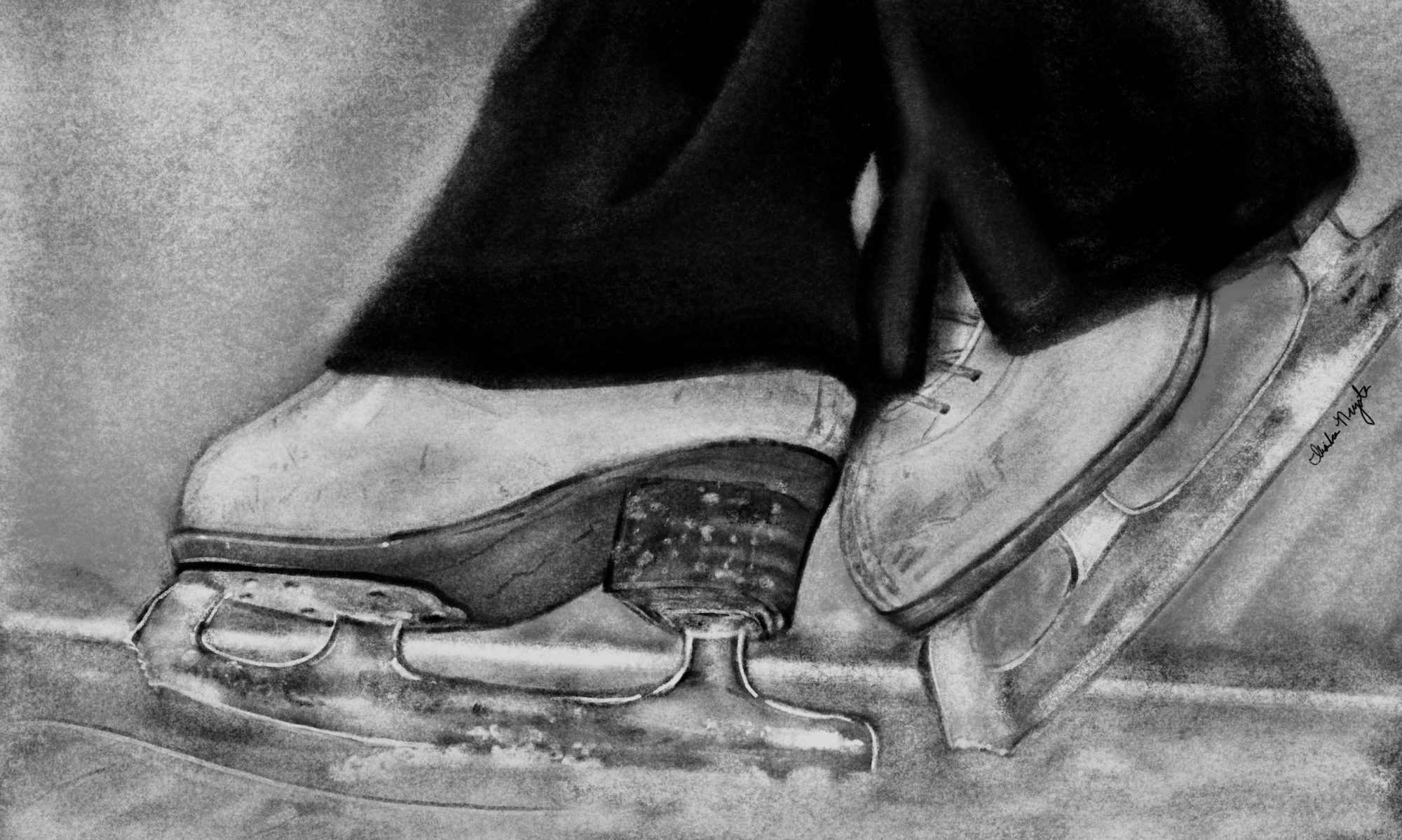Doubling Down or Downing the Double
It’s time for Skatergirl to work on her jumps again, another chance to make her jump consistent. This time, she is working on her double axel. She does a backspin, then a few single axels to warm-up. Alright, she feels ready to go.
She gears up for the double axel. It is executed very well, almost axel-lent, one might say. The takeoff is smooth, the landing is solid. Skatergirl feels great.
Coach, wants her to do three double axels before her lesson.
“One down, two more to go,” she thinks to herself.
She takes a deep breath and starts the approach for the next jump. She feels a little nervous, “will the next axel be as good as the first?” She certainly hopes so.
Then, “Double, double, toil and trouble, make Skatergirl mess up her axel…” It’s almost like a spell was cast.
She steps onto her left forward outside edge for the takeoff. She hits her toe pick and vaults into the air. The takeoff seems to be okay, but halfway through the jump she starts to go sideways. While she lands on one foot, she can’t hold onto the landing and falls.
Instead of jumping for joy, Skatergirl feels like the ground was stolen out from under her.
Why Can’t I Jump Consistently?
Thoughts of frustration skate around in her mind.
“Why can’t I do this jump? I just did a super good double axel, but now I can’t? What is wrong with me?”
She has one more shot. Maybe the third time will be a charm.
She is more tentative on the approach because she wants it to go well. Her expectations are high. Her body tense. As a result, the third double axel is the same as the second. She ends up falling again.
She asks herself, “What happened? The first jump was so good! Why am I having such trouble getting three good ones in a row? Why can’t I be consistent?”
Focus Shift, Consistency Rift
Without realizing it, after her first double axel, Skatergirl’s focus shifted.
This is what happened:
- After her first axel, she moved her focus away from the action needed to jump the 2A to wanting to land the 2A. In other words, from an action focus to an outcome focus.
- In order to do a jump and do it well, you need to pay attention to doing the jump first.
- The outcome is the result of the jumping process. Instead of focusing on what she needed to do, Skatergirl started to focus on the outcome she wanted.
- When she decided she “should” be able to land another 2A, her body tension rose, along with her rising expectations.
- Since she was successful at landing the first axel, her attention switched to landing the next two jumps. Or more accurately, not falling on the next two jumps. She literally jumped to the conclusion.
- Focusing on not falling, or trying to do the next jumps perfectly creates tension in her body. Tension in her body can throw her timing and technique off. Good jumps come from a relaxed and ready body.
Do the Jump, Then Land the Jump
As the saying goes, “Don’t think too much,” because you might create a problem that wasn’t there in the first place.
Here’s how to handle it:
Start with your mind. Clear it of the past and the future.
Bring yourself to the present moment as you are doing the jump for the first time today. Bring your attention to doing the jump rather than landing the jump.
Being in the present and able to take control of your actions will allow you to be more relaxed and ready. Instead of hoping and worrying about not falling, you can take action to do the jump.
Being able to take action towards the outcome you want will help you decrease stress. Less stress allows you to more tension-free. Less tension in your body helps you to jump more consistently.
Start with these three steps:
- Start to Recognize when your attention is not on the action of doing the jump.
- Thinking or worrying about landing the jump.
- Thinking or worrying about not landing the jump
- Wanting to avoid making mistakes.
- Wanting to avoid falls.
- Stop! Take a time out. Take a few deep breaths to relax your muscles and clear your mind.
- Refocus your attention on what you are doing. The actions that make a successful jump.
It seems counterintuitive: not focusing on landing the jump will help you land the jump.
“Your focus determines your reality.” -famous Jedi quote
So, when you focus on doing the jump, you focus on doing what you need to. The universe will determine the rest.
I assure you, once you put these three steps in place, your jumps will be as smooth as Lionel Richie. Once, twice, three times an axel…(look it up if you are not an oldster).
So, do you focus more on the outcome of your jump rather than the actual jump? Has this affected your performance? Do you think these three steps can help? I would love to hear your experience so share in the comments!
Mental skills training can make a difference because it can help you access what is already there during competition and practice. Start here; download “Confidence Myth Busters,” a complimentary eBook and make a change.
